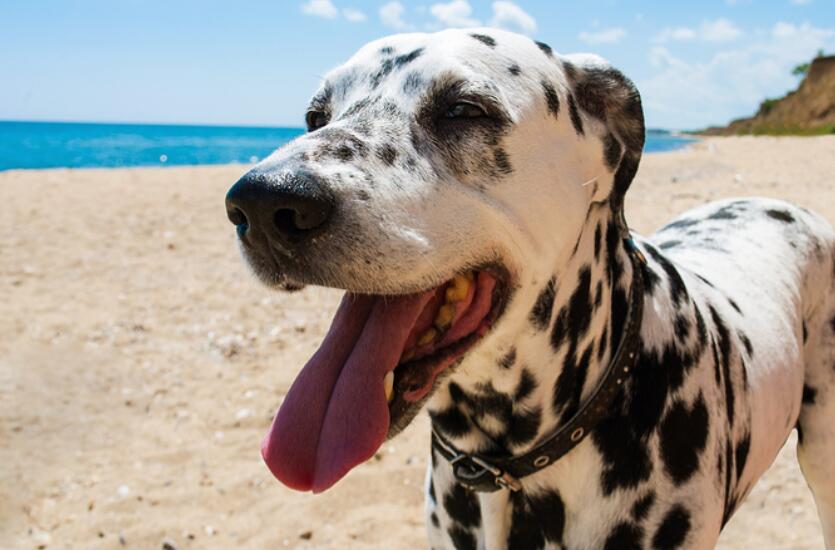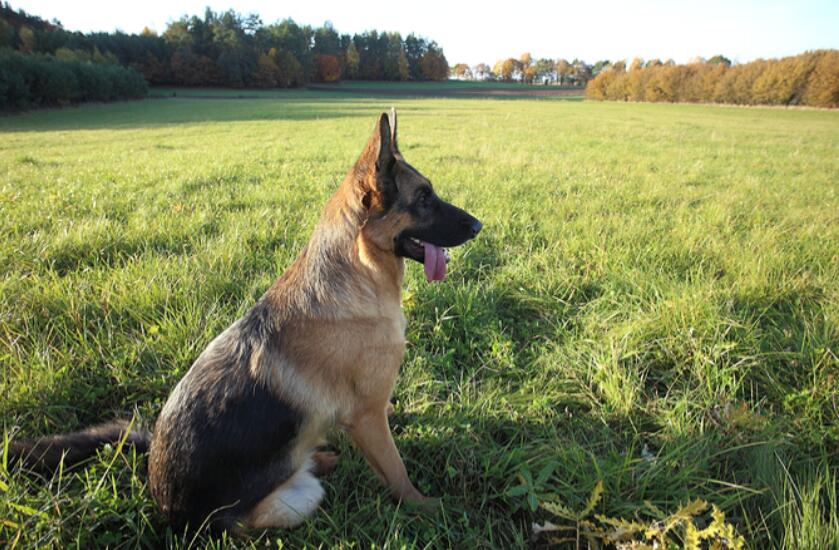 As a veterinarian, I naturally consider the genetic backgrounds of my dogs and think about their inherent risk for breed-specific health problems. For example, both of my mixed-breed dogs have conformations similar to those of Corgis and Dachshunds. Knowing that the spines of these breeds are susceptible to disc disease, I have taken precautions to prohibit my dogs from jumping off of furniture that could cause back discomfort.
As a veterinarian, I naturally consider the genetic backgrounds of my dogs and think about their inherent risk for breed-specific health problems. For example, both of my mixed-breed dogs have conformations similar to those of Corgis and Dachshunds. Knowing that the spines of these breeds are susceptible to disc disease, I have taken precautions to prohibit my dogs from jumping off of furniture that could cause back discomfort.
While certain diseases are associated with purebred dogs, there are various medical problems associated with multiple breeds with similar stature or conformation. When considering the purchase or adoption of a new dog, due diligence must be performed on the particular breed and, if applicable, the breeder. Some breeds are inherently healthier than others because they tend to have fewer medical problems.
Learn more about the most common genetic disorders in dogs, which breeds are prone to them and how to treat them here:. Hip dysplasia
Hip dysplasia
The mission of the Orthopedic Animal Foundation (OFA) is “to improve the health and well-being of companion animals by reducing the incidence of genetic diseases.” The organization’s original motivation was to specifically reduce the prevalence of hip dysplasia in dogs. The hip is a ball and socket joint. In order for the joint to function optimally, the ball must conform or fit snugly in the slot. Poor hip conformation usually leads to intra-articular cartilage degeneration, arthritis and pain.
Signs of hip dysplasia include difficulty standing or standing up, difficulty going up and down stairs, inability to jump on furniture or vehicles and reluctance to run or walk. Depending on the degree of hip dysplasia, medication and sometimes surgery are required. Medical treatments include pain medications, physical therapy, cold laser therapy, glucosamine chondroitin products, and even stem cell therapy. There are several surgical options, such as total hip replacement.
Maintaining a dog’s ideal weight is one of the most important ways to reduce hip dysplasia. Breeds most often affected include: German Shepherds, Rottweilers, Bulldogs, Great Danes, St. Bernards, Neapolitans, and Hounds. Bladder Bladder Stones
Bladder Bladder Stones
Although bladder stones are sometimes found on radiographs sometimes as a surprisingly incidental finding, many dogs experience discomfort and exhibit significant clinical problems due to stones in the urethra. Symptoms include urinary strain, urinary accidents, increased frequency of urination and increased blood in the urine.
Although any breed or mix of dog can develop bladder stones, some purebred dogs are prone to forming them, including Dames Antelope, Newfoundland, Bichon Frise and Miniature Schnauzers.
A long-term treatment called cystotomy involves the surgical removal of stones from the bladder. Other procedures include cystoscopy and laser lithotripsy, in which a scope is delivered into the bladder and a laser is used to break the stone into pieces large enough to pass through the dog’s urethra. Epilepsy
Epilepsy
Witnessing a pet having a seizure is very shocking and distressing. During a severe seizure, dogs usually stiffen and fall to the floor, salivate, slap their legs, and in some cases lose control of their bladder and bowels or vocalize. Seizures occur when cells in the brain become overexcited and exceed what is called the “seizure threshold. If the underlying cause is not found, the presumptive diagnosis of recurrent epilepsy is idiopathic (unknown underlying) epilepsy.
Although further research is needed, studies have shown that epilepsy is a heritable trait in certain dog breeds (e.g., German Shepherds, Beagles, Belgian Tervurens, Keeshonds, Dachshunds, Golden Retrievers, and Labradors). Epilepsy can be treated with anticonvulsant medications. Depending on the dog, a drug or combination of drugs may be used to control the seizures. Since there is no cure for epilepsy, the practical goal of treatment is to control seizures by reducing their frequency and severity. Heart disease
Heart disease
Several dog breeds are known to have inherited heart problems. Cavalier King Charles Spaniels and Dachshunds are at risk for mucoviscid valve disease, a condition that causes increased pressure in the heart chambers and eventually leads to signs of heart failure such as coughing, weakness, loss of appetite, bloating, difficulty breathing and collapse.
In addition, breeds such as the Doberman Pinscher, Great Dane and Boxer have a genetic susceptibility to dilated cardiomyopathy. Dogs with this condition have abnormal heart muscle tissue, resulting in a weak and dilated heart.
Boxers are also at genetic risk for inherited arrhythmogenic right ventricular cardiomyopathy (ARVC). As the name implies, ARVC is also a disease of the heart muscle. Boxers and bulldogs with ARVC form fatty or fibrous tissue, which replaces normal heart cells. This abnormal infiltration leads to problems with the heart’s electrical conduction system and the development of arrhythmias (irregular heart rhythms). Affected dogs can experience syncope, heart failure and possible sudden death. Treatment includes antiarrhythmic drugs and drugs for heart failure. Degenerative myelopathy
Degenerative myelopathy
Degenerative myelopathy (DM) is a slowly progressive neurological disorder caused by the degeneration of nerve fibers and their myelin sheaths in the spinal cord. Failure of nerve signaling in the lower and middle spinal cord can lead to symptoms in the hind legs such as weakness, wobbling, dragging of the hind feet, inability to stand and even eventual paralysis. Symptoms usually do not appear until the dog is middle-aged or advanced in age.
Although diabetes is devastating and incurable, affected dogs do not suffer from pain due to neurological deficits. However, the disease takes a psychological toll on both the dog and the pet parent. As dogs lose the ability to support their hind limbs, it becomes increasingly difficult for them to pose to urinate and defecate. Dogs with severely damaged hind limbs can be greatly helped by the use of a harness or stroller.
Although German Shepherds are most associated with DM, there are still many breeds that are at risk for this genetic condition, including American Water Spaniels, Bernese Mountain Dogs, Boxers, Russian Wolfhounds, Woolrich Welsh and Pembroke Welsh Corgis, Chesapeake Bay Retrievers, Kelly Blue Terriers and Puggles. Short brain syndrome
Short brain syndrome
Whether you like short-headed dogs or not, there is no denying that these breeds have become increasingly popular pets. Craniosynostosis literally means “short head”, but most people call these dogs’ faces “boring”. Examples include the English Bulldog, French Bulldog, Boston Terrier, Pug, Pekingese, Shih Tzu and the Cavalier King Charles Spaniel.
The pet parents of these breeds are used to the sound of hitting and beating nor. Some even find this trait endearing. The excessive breath sounds in near-headed dogs are due to anatomical abnormalities such as elongated soft pa, narrow nostrils (narrow nasal sac) (laryngeal tissue that obstructs airflow) and narrow trachea (windpipe). All of these physical features result in respiratory distress. Unfortunately, the breeding of these dogs flattens the nose, which hinders their ability to dissipate heat and makes them susceptible to heat stroke.
In addition to respiratory problems, the size of short-headed dogs makes them susceptible to dental problems, skin problems and eye problems. Potential pet parents of these breeds should be aware that these dogs often require extensive maintenance care at home and in the veterinarian’s office, possible corrective surgery for breathing difficulties and extra precautions in hot and humid weather.
Dog breeders have an ethical responsibility to raise healthy pets and to educate their clients about the potential medical issues associated with breeding them. With the advent of many genetic tests (genotypic evaluations), breeders should screen their dogs to determine if they are carriers of identified genetic diseases. Potential breeding dogs should also be evaluated for behavioral traits and physical characteristics such as hip conformation. organizations such as OFA have created databases to help track genetic disorders to prevent unnecessary animal suffering and emotional distress for pet parents.

